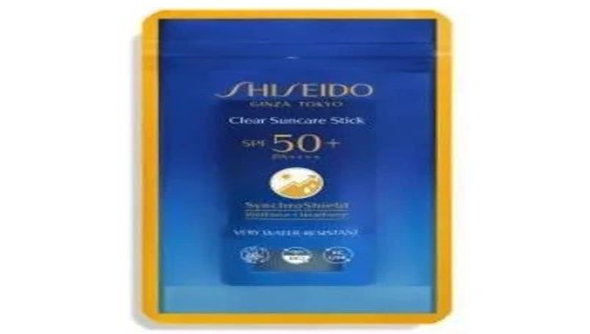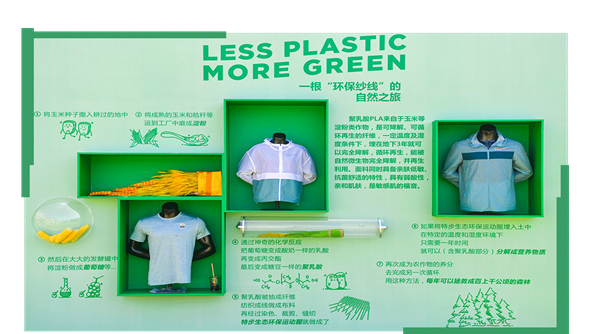-
 Application status and trend of polylactic acid (PLA) in automobiles.11 01,2022
Application status and trend of polylactic acid (PLA) in automobiles.11 01,2022At present, the main consumption field of polylactic acid is packaging materials, accounting for more than 65% of the total consumption; followed by applications such as catering utensils, fibers/non-woven fabrics, and 3D printing materials. Europe and North America are the largest markets for PLA, while Asia Pacific will be one of the fastest growing markets in the world as demand for PLA continues to grow in countries such as China, Japan, South Korea, India and Thailand. From the perspective of application mode, due to its good mechanical and physical properties, polylactic acid is suitable for extrusion molding, injection molding, extrusion blow molding, spinning, foaming and other major plastic processing processes, and can be made into films and sheets. , fiber, wire, powder and other forms. Therefore, with the passage of time, the application scenarios of polylactic acid in the world continue to expand, and it has been widely used in food contact grade packaging and tableware, film bag packaging products, shale gas mining, fibers, fabrics, 3D printing materials and other products It is further exploring its application potential in the fields of medicine, auto parts, agriculture, forestry and environmental protection. In the application in the automotive field, at present, some other polymer materials are added to PLA to make composites to improve the heat resistance, flexibility and impact resistance of PLA, thereby expanding its application scope in the automotive market. . Status of foreign applications The application of polylactic acid in automobiles abroad started early, and the technology is quite mature, and the application of modified polylactic acid is relatively advanced. Some foreign car brands that we are familiar with use modified polylactic acid. Mazda Motor Corporation, in cooperation with Teijin Corporation and Teijin Fiber Corporation, has developed the world's first bio-fabric made of 100% polylactic acid, which is applied to the quality and durability requirements of the car seat cover in the car interior. middle;Japan's Mitsubishi Nylon Company produced and sold a kind of PLA as the core material for automobile floor mats. This product was used in Toyota's third-generation new hybrid car in 2009. The environmentally friendly polylactic acid fiber material produced by Japan's Toray Industries Co., Ltd. was put into use as a body and interior floor covering on Toyota Motor Corporation's hybrid sedan HS 250 h. This material can also be used for interior ceilings and door trims upholstery material. Japan's Toyota's Raum model uses kenaf fiber/PLA composite material to make spare tire cover, and polypropylene (PP)/PLA modified material to make car door panels and side trim panels. German Röchling Company and Corbion Company have jointly developed a composite material of PLA and glass fiber or wood fiber, which is used in automotive interior parts and functional components. American RTP Company has developed glass fiber composite products, which are used in automobile air shrouds, sunshades, auxiliary bumpers, side guards and other parts. EU air shrouds, sun hoods, sub-bumpers, side guards and other parts. The EU ECOplast project has developed a bio-based plastic made from PLA and nanoclay, which is specially used in the production of auto parts. Domestic application status The application research of domestic PLA in the automobile industry is relatively late, but with the improvement of domestic environmental protection awareness, domestic car companies and researchers have begun to increase the research and development and application of modified PLA for vehicles, and the application of PLA in automobiles has been rapid. development and promotion. At present, domestic PLA is mainly used in automotive interior parts and parts. Lvcheng Biomaterials Technology Co., Ltd. has launched high-strength and high-toughness PLA composite materials, which have been used in automotive air intake grilles, triangular window frames and other parts. Kumho Sunli has successfully developed polycarbonate PC/PLA, which has good mechanical properties and is biodegradable and recyclable, and is used in automotive interior parts. Tongji University and SAIC have also jointly developed polylactic acid/natural fiber composite materials, which will be used as interior materials for SAIC's own brand vehicles. Domestic research on the modification of PLA will be increased, and the future focus will be on the development of polylactic acid compounds with long service life and performance that meets the requirements of use. With the development and progress of modification technology, the application of domestic PLA in the automotive field will be more extensive.
-
 The Shiseido sunscreen outer packaging bag is the first to use PBS biodegradable10 25,2022
The Shiseido sunscreen outer packaging bag is the first to use PBS biodegradable10 25,2022SHISEIDO is a brand of Shiseido that is sold in 88 countries and regions around the world. This time, Shiseido used biodegradable film for the first time in the packaging bag of its sunscreen stick "Clear Suncare Stick". Mitsubishi Chemical's BioPBS™ is used for the inner surface (sealant) and zipper part of the outer bag, and FUTAMURA Chemical's AZ-1 is used for the outer surface. These materials are all derived from plants and can be decomposed into water and carbon dioxide under the action of natural microorganisms, which are expected to provide ideas for solving the problem of waste plastics, which is increasingly attracting global attention. In addition to its eco-friendly features, BioPBS™ was adopted because of its high sealing performance, processability and flexibility, and AZ-1 was highly valued for its elasticity and printability. In today's increasingly stringent environmental protection requirements, Mitsubishi Chemical and FUTAMURA Chemical will contribute to the construction of a circular society and the achievement of SDGs by expanding the above-mentioned products.
-
 100,000 balloons released! Is it 100% degradable?10 18,2022
100,000 balloons released! Is it 100% degradable?10 18,2022On July 1, along with the cheers at the end of the 100th anniversary celebration of the Communist Party of China, 100,000 colorful balloons rose into the air, forming a spectacular color curtain wall. These balloons were opened by 600 students from the Beijing Police Academy from 100 balloon cages at the same time. The balloons are filled with helium gas and are made of 100% degradable materials. According to Kong Xianfei, the person in charge of the balloon release of the Square Activities Department, the first condition for a successful balloon release is the ball skin that meets the requirements. The balloon that was finally selected is made of pure natural latex. It will explode when it rises to a certain height, and it will degrade 100% after falling into the soil for a week, so there is no problem of environmental pollution. In addition, all balloons are filled with helium, which is safer than hydrogen, which is easy to explode and burn in the presence of an open flame. However, if the balloon is not inflated enough, it will not be able to reach a certain flying height; if it is too inflated, it will easily burst after being exposed to the sun for several hours. After testing, the balloon is inflated to a size of 25 cm in diameter, which is the most suitable for release.
-
 Xtep launches PLA T-shirt .10 08,2022
Xtep launches PLA T-shirt .10 08,2022On June 3, 2021, Xtep released a new environmentally friendly product-polylactic acid T-shirt in Xiamen. Clothes made of polylactic acid fibers can be naturally degraded within one year when buried in a specific environment. Replacing plastic chemical fiber with polylactic acid can reduce the harm to the environment from the source. It is understood that Xtep has established an enterprise-level technology platform - "Xtep Environmental Protection Technology Platform". The platform promotes environmental protection in the whole chain from the three dimensions of "environmental protection of materials", "environmental protection of production" and "environmental protection of consumption", and has become the main driving force of the group's green material innovation. Ding Shuibo, founder of Xtep, said that polylactic acid is not resistant to high temperature, so that the production process is 0-10°C lower than ordinary polyester dyeing temperature, and the setting temperature is 40-60°C lower. If all Xtep fabrics are replaced with polylactic acid, 300 million cubic meters of natural gas can be saved a year, which is equivalent to 2.6 billion kWh of electricity and 620,000 tons of coal consumption. Xtep plans to launch the knitted sweater in the second quarter of 2022, and the polylactic acid content will be further increased to 67%. In the third quarter of the same year, 100% pure polylactic acid windbreaker will be launched, and by 2023, strive to realize the single-season market of polylactic acid products The delivery volume exceeds one million pieces.




